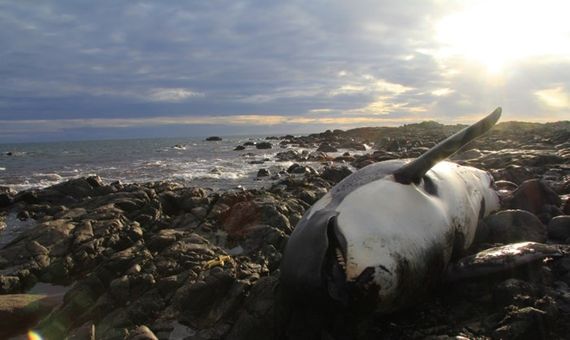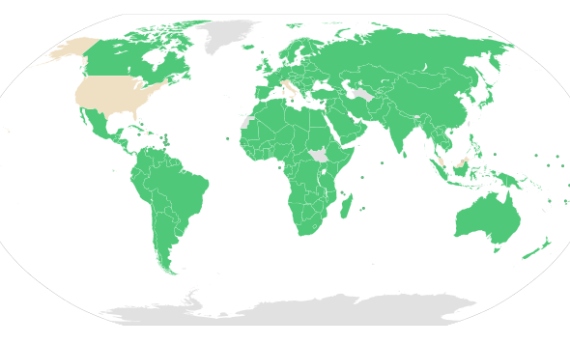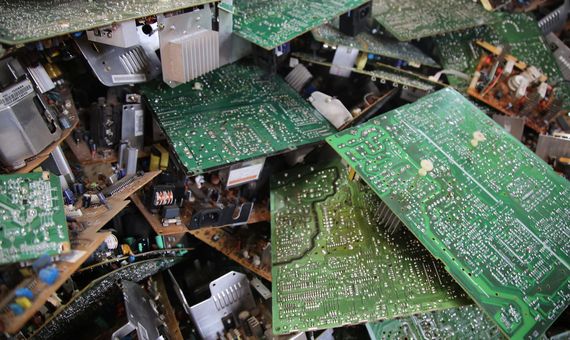When a killer whale washed up dead on a Scottish island in January 2016, the news caused both sadness and outrage: Lulu, as the animal was called, was one of only nine members of the only resident orca community in British seas, and she had died entangled in a fishing line. But the outrage was triggered when a post-mortem analysis revealed that Lulu’s blubber contained a level of polychlorinated biphenyls (PCBs) 100 times higher than that which affects the health of cetaceans. This is despite the fact that PCBs have been banned in the UK and many other countries for decades. But Lulu’s case, while extreme, is far from rare: it illustrates the serious problem of so-called persistent organic pollutants (POPs), harmful compounds that continue to pollute the environment for years even if they are no longer manufactured, pollutants that, like the classic zombies of fiction, continue to threaten us after death.
After the work of chemist Clair Patterson succeeded in getting the first bans of tetraethyl leaded gasoline put in place in 1986, pollution levels of the dangerous metal have fallen dramatically around the world. However, it is not always so easy to erase the damage already done by a compound that has been manufactured, distributed and used on a massive scale before its enormous harms were known. The best known example is dichlorodiphenyltrichloroethane, or DDT, the insecticide that was born during World War II as a miracle product until it was banned in 1972 in the US and later in many other countries, following the disclosure of its harmful effects on the environment—and, as was later discovered, also on human health—by environmental pioneer Rachel Carson.
DDT is the paradigmatic POP: because of its organic chemical nature—generically, hydrocarbons—it is hydrophobic (insoluble in water) and therefore lipophilic (soluble in fats). Resistant to degradation, it remains for a long time and accumulates in the fatty tissues of animals as it moves up the food chain. It is toxic to birds and fish. DDT is banned or severely restricted in 68 countries, although it continues to be used in certain regions for malaria mosquito control. However, it remains a common contaminant in water and is detectable in the blood of many people. In humans it has been linked to various diseases and infertility, and its damage can be passed on to successive generations through the epigenetic changes it causes, chemical modifications of DNA that do not alter the genomic sequence.

Historical landfills, a problem from the past that affects the present
The DDT case was a major impetus for the creation of the United Nations Environment Programme’s Stockholm Convention, which came into force in 2004 and has been signed by 183 states and the European Union (although some states have not ratified it, such as the US, Israel, Italy and Malaysia). This international agreement to eliminate or restrict the manufacture and use of POPs initially included 12 compounds, known as the “dirty dozen“: alongside DDT there are other pesticides, some of which, as Michael Skinner, a reproductive biologist at Washington State University specialising in environmental toxics, told OpenMind, “have similar transgenerational impacts” to DDT. To these compounds, the Stockholm list also added PCBs, dioxins and furans. The latter two are industrial by-products or wastes, but PCBs, like DDT, were products created for a purpose.
In particular, PCBs were widely used mainly as insulators, coolants and flame-retardants, in electronic components and electrical equipment and installations, but also in carbonless copy paper. Almost as soon as their use became widespread in the 1930s, their harmful effects on health and the environment began to be discovered. In the 1970s the first bans were imposed, but by then more than one million tonnes had already been produced. It is estimated that two thirds of this total production is still waiting to be released into the environment, as it is still trapped in products in use, in storage or in so-called historical landfills, where waste of all kinds accumulated before current environmental regulations. This is the problem of so-called legacy pollutants, substances that are currently withdrawn from the market but continue to pollute.

As environmental geochemist Kate Spencer of Queen Mary University of London tells OpenMind, these historic landfills are a ticking time bomb loaded with huge quantities of now banned substances and materials, such as PCBs, asbestos and many others. The danger of these landfills lies in the leaching of substances and erosion. “If they are being flooded and releasing soluble contaminants then POPs could be very important,” she says. “If they are being eroded then we need to think about solid wastes such as asbestos, or plastics.” In an article in The Conversation, Spencer and her colleague Alex Ford cited data showing that in Europe alone there are almost one million historic landfills, 10,000 of them in coastal areas.
A danger to the world’s fauna… and also to humans
Air and water can transport these pollutants long distances. Through the food chain they accumulate in the tissues of predators, as in the case of Lulu. Although since the banning of PCBs in the 1970s and 1980s their presence in the atmosphere has declined in the developed world, “legacy pollutants such as PCBs continue to pose a large risk to wildlife, like sharks and marine mammals,” David Megson, an expert in environmental forensic chemistry at Manchester Metropolitan University, tells OpenMind. Like Lulu, many marine mammals have high levels of PCBs, which affect their immune systems and fertility; neither Lulu nor her pod mates have had calves, and experts fear that PCB-induced infertility could decimate killer whale and dolphin populations in the coming decades, especially in Europe.
But while today at least the production of PCBs is banned in the countries that are signatories to the Stockholm Convention, the problem of POPs is infinitely broader: in successive revisions of the convention the “dirty dozen” has now been extended to 26 substances, including more pesticides, industrial products and by-products. The convention mandates the reduction of the latter and the elimination of the rest, with the exception of the authorised use of DDT and other substances, including a group generically called perfluoroalkyls and polyfluoroalkyls, or PFASs, such as perfluorooctanoic acid (PFOA), perfluorooctanesulfonic acid (PFOS) and related compounds.

Uses of PFASs include the sealing of containers—including food and beverage containers—fire-fighting foams and semiconductors. Studies have found possible links to several diseases, including testicular and kidney cancers, although the science on this is still in progress. For his part, Megson is quick to describe PFASs as one of the most dangerous groups of contaminants in the world today; they are often referred to as “forever chemicals” because of their long persistence. PFOA and PFOS are beginning to be phased out following their inclusion in the Stockholm Convention, but are being replaced by other PFASs, of which there are more than 4,700 types.
Nevertheless, thanks to the Stockholm Convention, the overall situation with regard to POPs is looking more hopeful. “I would say we are making things better; some excellent work has been performed to ensure many of the most toxic chemicals have been phased out of use,” says Megson, adding that the positive effects on wildlife are notable, such as the recovery of the bald eagle in the US and the peregrine falcon in the UK. However, both the natural environment and large human populations continue to be exposed to POPs. “Dioxins and halogenated flame retardants pose a large risk to communities around incinerators and specifically at e-waste sites in developing countries,” says the expert. “Then there are PFAS; these pose a risk to many of us through consumption of contaminated drinking water.” In many cases, he adds, there is not even data on this contamination, especially in countries that have not taken strong action against a problem that, like zombies, does not go away by simply burying it.
Comments on this publication